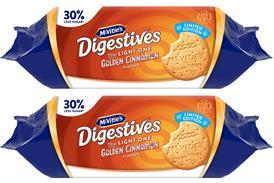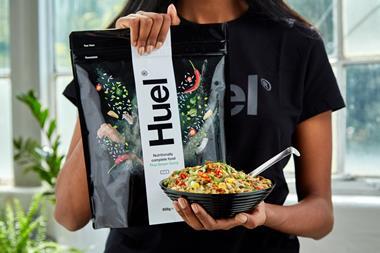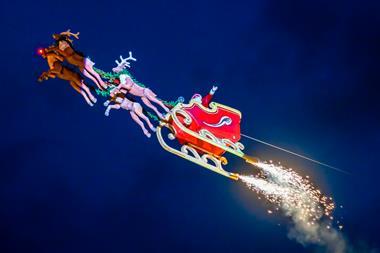What’s the worst thing about Coke’s AI-generated version of its famous “Holidays Are Coming” commercial?
There’s a lot to choose from. At The Grocer, we’re torn between Santa’s missing fingernails and the famous red truck with wheels that don’t spin. Maybe it’s the overly polished look of the “soulless” graphics – or just the simple fact that, by using Gen AI to make the ad, Coca-Cola has stripped the humanity out of one of the UK’s most well-known Christmas moments.
For many, the festive season doesn’t officially start until the Coca-Cola truck makes an appearance, spreading joy, goodwill and fizzy drinks in its wake. This year’s version made its debut last week, leaving Coke facing a backlash as it revealed the advert had been created using generative artificial intelligence.
“This year, we crafted films through a collaboration of human storytellers and the power of generative AI,” the brand said, adding that it would “always remain dedicated to creating the highest level of work at the intersection of human creativity and technology”.
The ad itself – which pays homage to a classic Coca-Cola 1995 original – certainly ticks all the right boxes, but has left many in the creative industries feeling cold.
Criticisms include the danger that AI advances will leave humans out of work, as well as the fact that many generative AI tools were trained on existing creative without compensation or credit – and that’s before we even start on the unsettling glitches and design flaws. A six-fingered Santa, anyone?
Not all ad campaigns are created equally
It’s undoubtedly a bold move, but here’s the thing. After watching the ad – which is clearly either created by AI or has been so overworked in post-production that all semblance of reality has been removed – it’s hard not to have an instinctively Christmassy response to it.
This has been borne out by System1’s ‘creative effectiveness’ testing. The research – which tests adverts on real-life consumers – showed that actually, the ad was pure effectiveness gold.

Scoring a 5.9 star rating (out of a possible six), the research showed that the ad has “significant potential to convert in-market demand” (make people buy Coke). It was also hugely distinctive, with 98% of the audience identifying who the ad was for in just 15 seconds. That level of recognition, coupled with strong emotional engagement, gave the ad such an impressive rating.
And not a single negative response to be seen.
So yes, the AI commercial scores highly. But not all ad campaigns are created equally. Is that positive response simply because people are looking at it and seeing the advert we’ve all known and loved for the past 30 years?
Creative consistency
With its instantly recognisable visuals and soundtrack, “Holidays Are Coming” has been around for three decades – and this version taps directly into that impressive heritage, giving consumers all the cues they need to immediately associate Coca-Cola with the upcoming festivities.
The ‘real magic’ here was how the brand codes in the ad were strong enough to distract audiences from the glitchy AI tells, letting them feel positive sentiment towards the commercial.
As BigSmall partner Matt Edwards points out: “Iconic trucks, polar bears, the colour red and even good old Santa himself – they’re all in this campaign, just as they have been every Christmas for decades. They’re also all human creations, so let’s not get carried away with the ‘entirely AI-generated’ PR spin.”
But, despite that positive sentiment, there was still an underlying feeling of unease for many. Sure, the ad looked nice and shiny (perhaps too shiny?) and we all knew the polar bears were never real in the first place – but did Coca-Cola really need to take this step? After all, if a brand with a budget the size of Coca-Cola’s can put efficiency above creativity at Christmas, then what hope is there for the rest of the industry?
Read more: The battle for the best Christmas ad 2024 - our expert panel weighs in
Marketers, once they’d got past the shock that the ad scored so positively, were left with some questions about what this means for the future of advertising and specifically the future of AI ads. Can other, smaller, brands take this step so easily and effectively?
Perhaps so.
Havas Market MD Alex Walker believes that, outside the advertising industry bubble, consumers will “neither care nor notice” if AI has been used to make an advert.
“AI is clearly a new and exciting part of the CGI and VFX toolkit and many brands and agencies will be keen to road-test its capabilities this year, but what the consumers clearly love is the nostalgia that Coca-Cola’s consistent Christmas creative evokes,” he added.
But there are not many brands who have leant so heavily into creative consistency as part of their long-term strategy. Coca-Cola has run this ad in various guises for the last 30 years, repeating those familar elements ad nauseum. Audiences don’t need to wonder who this ad for; it’s ingrained in our collective consciousness.
As Kantar head of creative excellence Lynn Deason puts it: “People rarely care about how an ad is made, it’s what it makes them feel and remember that’s important.”
A win then, for creative consistency – even if the jury is still out on the ‘real magic’ of generative AI.
The battle for the best Christmas ad 2024: which ones impress our expert panel?

From a star-laden ‘crime scene’ to Kevin Carrot making boob jokes, this year’s ads are a varied bunch
- 1
- 2
- 3
 Currently
reading
Currently
reading
Does it really matter that Coca-Cola’s AI Christmas ad isn’t ‘the real thing’?
- 5
- 6
- 7
- 8
- 9
- 10
- 11
- 12
- 13
- 14
- 15
- 16
- 17
- 18

































































No comments yet